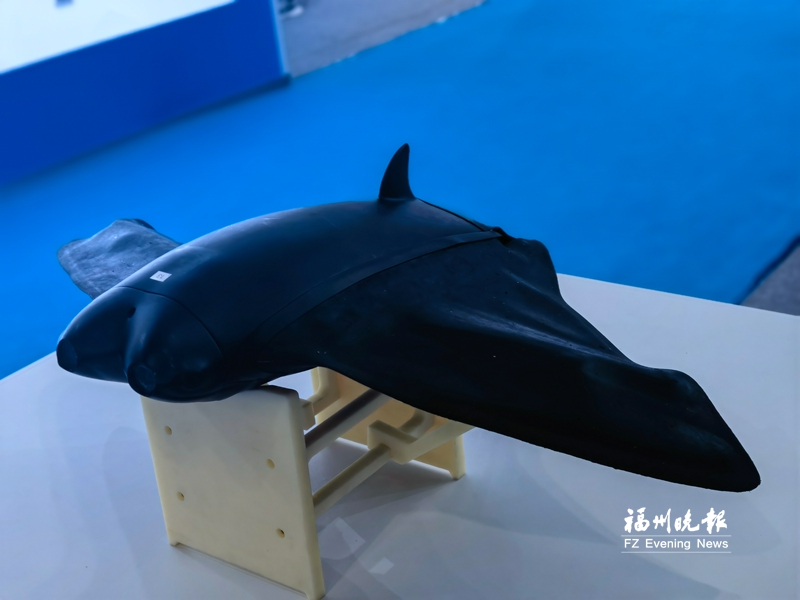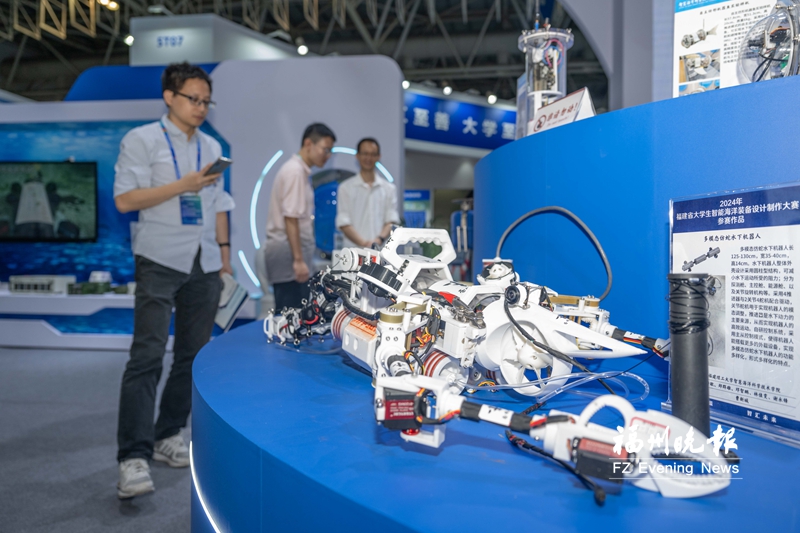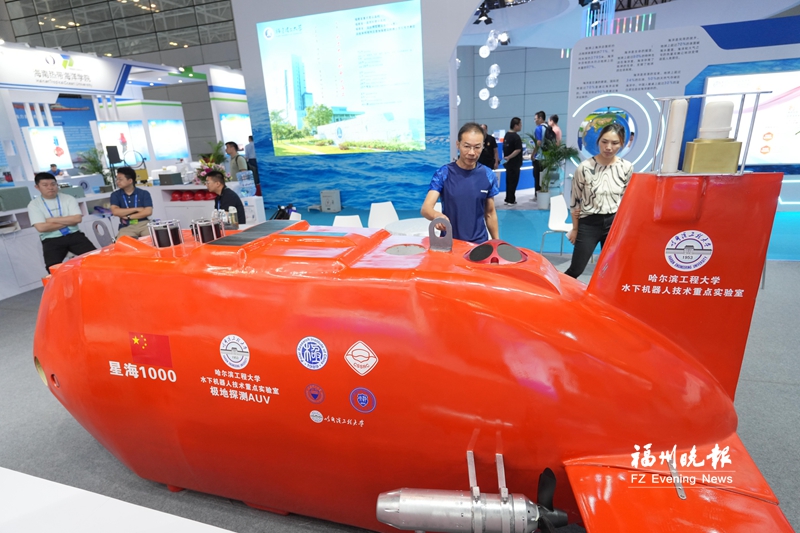Recently, at the Second China Maritime Equipment Expo (referred to as the “Maritime Equipment Expo”), the reporter observed various underwater robots with different designs. These robots seemed to possess the ability to undergo “72 transformations”, each one showcasing unique capabilities and skills. They embody human dreams, carry the dreams of humanity to new horizons, and contribute to the advancement of maritime technology and the strengthening of the marine industry.
The “chubby and cute” robot explores the polar regions
“Xinghai 1000” polar exploration unmanned submersible.Reporter: Bao Hua / Photography
In bright orange and yellow, looking adorably plump, the unmanned submersible is capable of exploring the mysteries of the icy, snow-covered polar regions. On November 16 at the Harbin Engineering University booth, the reporter saw this underwater robot - “Xinghai 1000”, a polar exploration unmanned submersible jointly developed by Harbin Engineering University. It is truly major equipment.
The “Xinghai 1000” measures approximately 3.2 meters in length, 1.4 meters in width, and 1.6 meters in height. It is primarily designed for large-scale, long-duration, and deep-sea scientific research and exploration missions under polar ice sheets. Last year, it completed a remarkable mission—accompanying the research vessel “Xuelong-2” on a polar expedition.
During this expedition, “Xinghai 1000”, equipped with a multi-beam ice morphology detection sonar developed by Harbin Engineering University’s research team, successfully completed a 78-day scientific mission. It enabled Chinese researchers to clearly observe the underside of Arctic sea ice for the first time, exploring approximately 7,000 square meters of ice morphology beneath the ice. The submersible also collected crucial oceanic data beneath the ice, enriching the Arctic Ocean data database and providing invaluable experience for conducting scientific research in high-risk areas and extreme conditions in polar regions.
“Internet-famous Fish” Has Incredible Research Strength

Bionic Manta Ray Soft-bodied Submersible Model.Reporter: Lin Shuying / Photography
“Come here, come here, listen carefully to his explanation!” On November 16, at the Northwestern Polytechnical University booth, when staff introduced the world’s first glide-and-push integrated bionic manta ray soft-bodied submersible model, some on-site visitors eagerly called over their children to “attend the lesson”.
This is a bionic fish developed independently by Northwestern Polytechnical University. The submersible mimics the flapping motion of a manta ray (“devil fish”) as it moves forward, while also incorporating a gliding propulsion mechanism. This allows the submersible to save energy and perform long-duration underwater scientific research missions.
It is learned that the research team’s goal is to make the bionic submersible swim more like a fish, or even better than a real fish. Although it is a “fake fish”, it has won praise for its cutting-edge technological capabilities, becoming an Internet-famous fish that went viral on social media after being featured in a CCTV report this year.
Equipped with optical cameras, sonar, side-scan sonar, and Beidou navigation systems, the submersible can carry out scientific research tasks in various scenarios. Through this “fish”, China has become the first to use a bionic submersible to monitor the growth of coral reefs in the South China Sea.
“Frogman” Can Roll 360 Degrees
At the booth of Shenhao Technology, a bionic robotic fish swimming in the water attracted considerable attention from visitors.
“The robotic fish controls its swimming direction through the gills and tail fins on both sides,” the staff explained. By giving the fish multiple joints in its body, the robot mimics the swimming motion of real fish. It can be used for teaching and research on marine biology movement and can also be equipped with cameras for patrols in shallow water areas.
“The left is Shenlong and the right is Xuanwu”. Next to the robotic fish, there were also “underwater robot brothers”, which are highly capable robotic “frogmen”.
The staff introduced that the “Shenlong” is a highly maneuverable, high-expansion underwater robot designed for operational tasks. It is equipped with advanced motion control algorithms and can be applied in fields such as underwater observation, scientific exploration, underwater terrain detection, dam and bridge pier inspection, and underwater security. “Compared to real frogmen, its efficiency is 50% higher.”
“Xuanwu” is a “plankton-crawling” hybrid ROV system, equipped with a versatile set of capabilities. It can perform 360-degree rolls underwater, crawl along walls, or move using a base-style crawling mechanism, making it highly effective for inspection and maintenance tasks. "For example, when clearing organisms attached to the bottom of a ship, the robot's tracks at the bottom will cling to the hull, and it will carry out cleaning tasks while hanging upside down,” explained a staff member.
The sea cucumber “catching tool” attracted attention

A bionic Boston lobster-shaped civilian submersible robot with a unique design. (Reporter: Lin Shuangwei / Photography)
At the booth of Harbin Engineering University, the sea cucumber harvesting robot may appear unremarkable at first, but it has a long pipe at the front resembling a vacuum cleaner, which is actually the key feature for harvesting sea cucumbers. Booth staff member Li Mingyang explained that this cable-operated underwater robot can use suction to harvest sea cucumbers without causing damage. The robot has already been tested in certain sea areas in Shandong, with the goal of achieving industrialization.
At the booth of Fujian University of Technology, a bionic Boston lobster-shaped civilian submersible robot caught the attention of many visitors, who couldn't resist taking pictures. It is said to have promising applications in scientific research, cultural heritage preservation, safety, and rescue. The booth also showcased several other robots, including a multi-modal bionic snake underwater robot, a special pipeline robot, a buoy cleaning robot, and a small underwater operation robot. (Reporters: Li Jinqing, Lin Shuying, and Chen Muyi)








